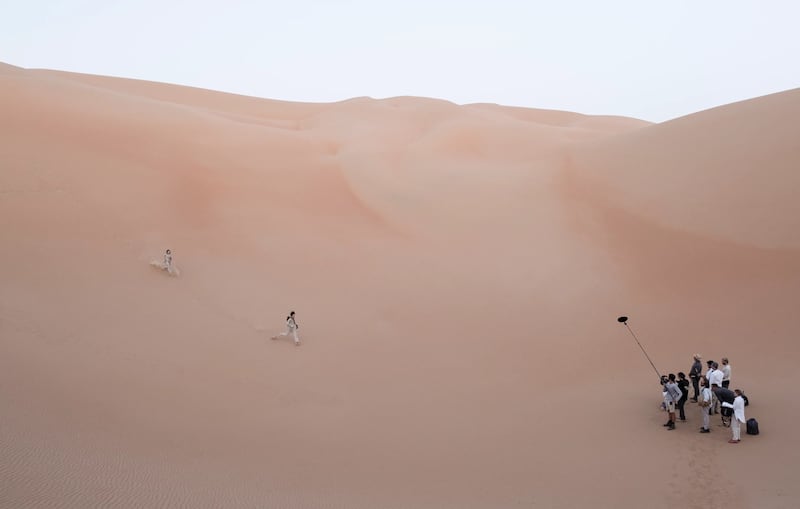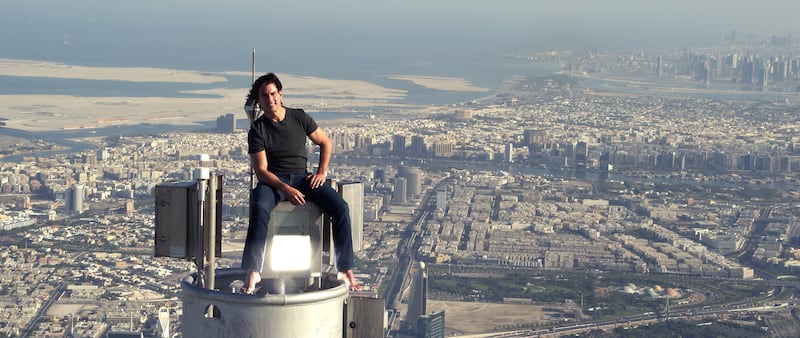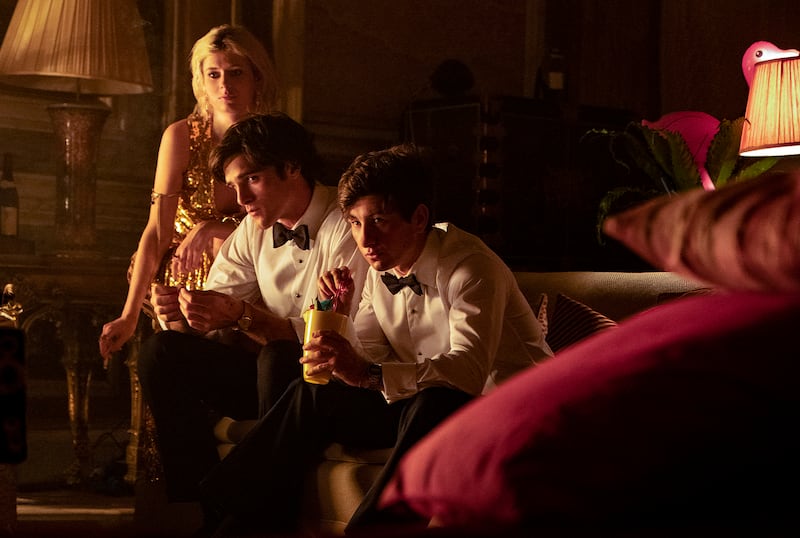GROWING up on film sets alongside her father, legendary unit stills photographer David James, Chiabella James gained invaluable insight into how movies are made – and, more importantly, the art of capturing iconic, intriguing images from scenes in progress or specially posed shots which can be used to sell the films to the public.
Having witnessed her dad working regularly with the likes of Steven Spielberg and Tom Cruise, London-based Chia (39) eventually followed in his sizeable footsteps to shoot unit stills herself, at first working as his assistant on Star Wars: The Force Awakens and Mission: Impossible – Fallout before striking out on her own to document magical movie moments on films including The Mummy, Mission: Impossible – Dead Reckoning Part One, King Richard, Dune: Part One, Saltburn and Bob Marley: One Love.

Thus, Chia is uniquely well-placed to discuss her craft at next week’s RENDR festival in Belfast, where she will give a talk titled Capturing A Film In One Shot.
“This originated with Dad and our mutual love of Guinness, I think,” she chuckles of how her father – who recently retired from unit stills work – recommended the Portview Trade Centre-based event after taking part in its 2019 and 2023 programmes.
However, the photographer reveals that the title of her RENDR talk may be slightly misleading.
Read more:

“Every film is incredibly different and there are now multiple outlets for each film,” Chia explains.
“So, the focus I’m going to try and take is that ‘one shot’ is really more like ‘21 shots’.”
Those 21 shots will help form the public’s first impressions of a particular film and, hopefully, build anticipation for its release. They may be seen everywhere and anywhere promotional opportunities exist, from magazine features and newspaper articles to social media feeds and, of course, movie posters.
“When it comes to unit stills, we are as a group, the most published photographers on the face of the Earth – and yet no-one knows who we are or understands what we do,” she observes.


“I find that quite an interesting conflict of interest, almost. So I find that by doing these things and explaining a little bit more about the role, how it functions, its importance and the names behind it is valuable.
She adds: “The thing with stills is we’re usually the last person to be hired, because the production itself needs to get up and running before they think about selling it. I think I got the phone call for Dune about 10 days before production started, in another country.
“So, sometimes it’s very last minute. But occasionally, I will get a call six months ahead, because it’s a film-maker who knows they want me and they want to lock in my availability.”

As mentioned, David James was a favourite of Steven Spielberg, so Chia got to hang out on the sets of Schindler’s List, Saving Private Ryan and Band of Brothers as a youngster.
Her father also formed a solid relationship with Tom Cruise after shooting Spielberg’s 2002 sci-fi, Minority Report, working with the A-lister repeatedly thereafter on films such as Knight and Day, Oblivion, Live Die Repeat, Jack Reacher: Never Go Back, and several Mission: Impossibles.

Chia has now also enjoyed working with Cruise on a number of occasions – often several thousand feet above sea level.
“The plane crash sequence on The Mummy is one of my favourite shooting experiences of all time,” she enthuses of capturing stills for the 2017 film, which involved shooting aboard a huge cargo plane dubbed ‘the vomit comet’ which repeatedly dives in order to create ‘zero-gravity’ conditions.
“I was very nervous going in, because I fully expected to vomit – and a multitude of our crew did. I think we did maybe two ‘drops’ before I realised ‘I’m actually really enjoying this’.
“It was definitely a tricky thing, to be able to photograph the scene while floating, but I absolutely loved every second of it. I really thrived up there.”
A year later, the pair were back in the air to shoot the Halo jump sequence for Mission: Impossible – Fallout, in which Cruise actually jumped out of a C17 cargo plane at 25,000ft – a key moment for the film that James underwent special training to shoot.
“Part of Tom’s whole ‘brand’ is that he does his own stunts,” she explains, “so he likes to have myself there to prove it.
“At one point, he got up and he walks into the centre of the plane with the back open, and he looked at me and he gestured like, ‘Come on, let’s take a shot’.
However, at that point, the photographer was safely belted-in at the rear of the cargo area, far from the open hatch where the crucial shots would actually happen.
“I just sort of turned to the skydiving professional beside me like, ‘What do we do now?’. I wasn’t wearing a parachute, so she clipped herself to me and the two of us ran out to the middle of the plane. I quickly took a few stills and then we hurried back before I ran out of breath.

“And then Tom jumped out the back.”
Eventually, Chia persuaded the stunt unit to give her her own oxygen tank and a safety tether long enough to get right up to the open cargo door in order to capture the actual moment of the jump itself.
That kind of thing was a world away from her recent job on Emerald Fennell’s acclaimed drama/thriller Saltburn, underlining the varied skill set required of a good unit stills photographer.

“As a creative, there is something lovely about ‘changing it up’,” enthuses Chia, who recently published a book of her photography from the set of Dune: Part One.
“However, I have to say that coming out of Dune and going straight into Saltburn was actually slightly intimidating. You know, there were no battle scenes, no epic adventure to catch visually – it was all little facial expressions and framing.

“I came into that going ‘Oh my God – can I do this?’. But it worked out wonderfully. Barry [Keoghan] and the cast were fantastic. I think what helped was it felt like a passion project for everyone involved.
“All members of that ensemble cast really wanted to work with each other – and me.”









